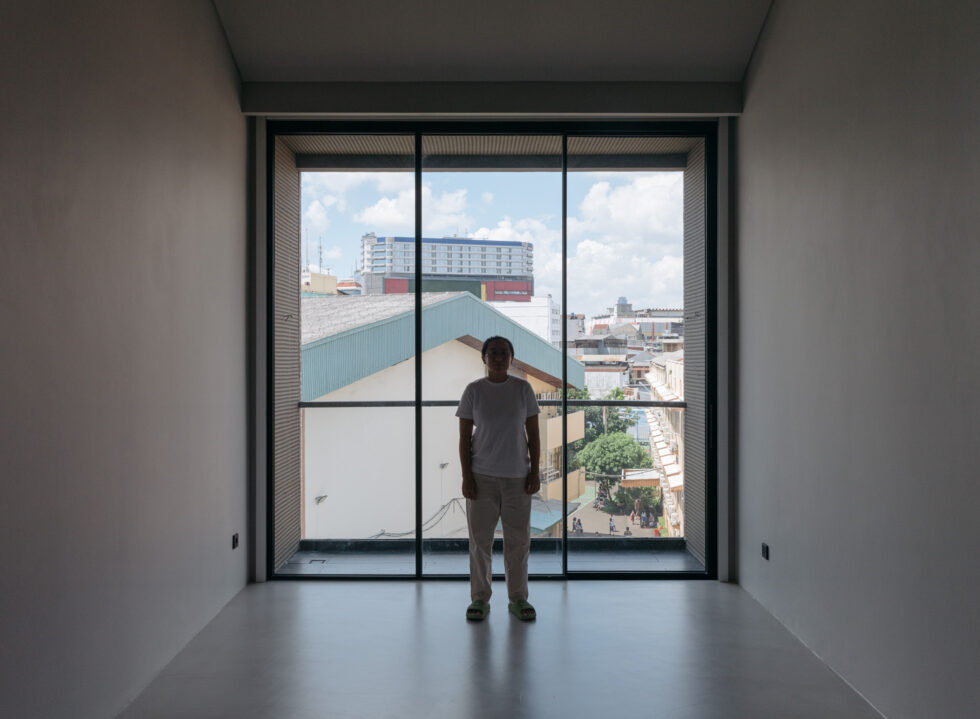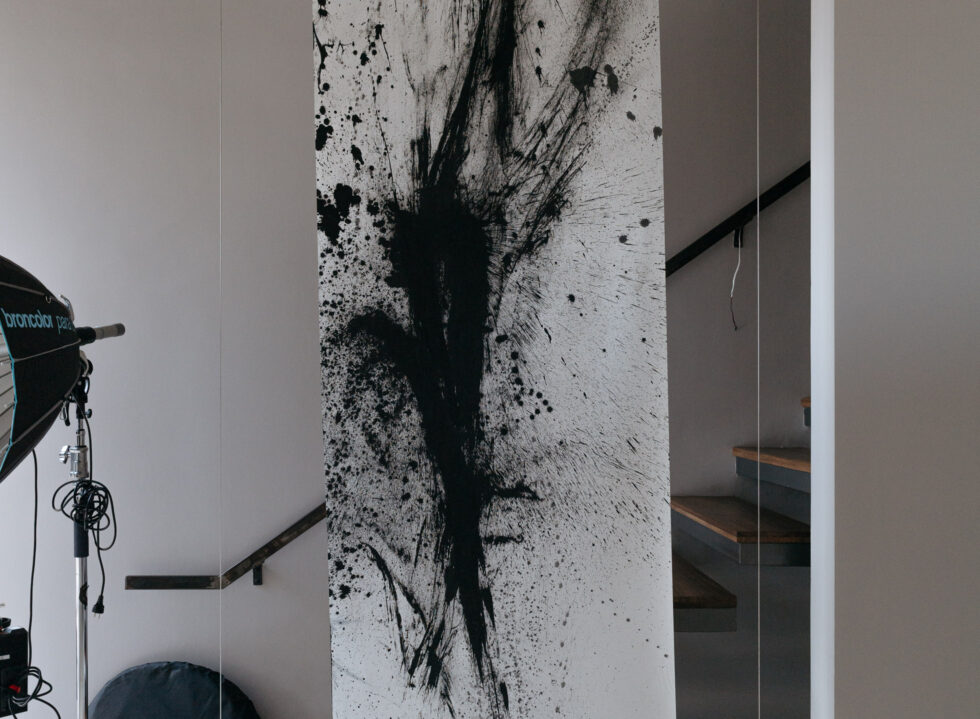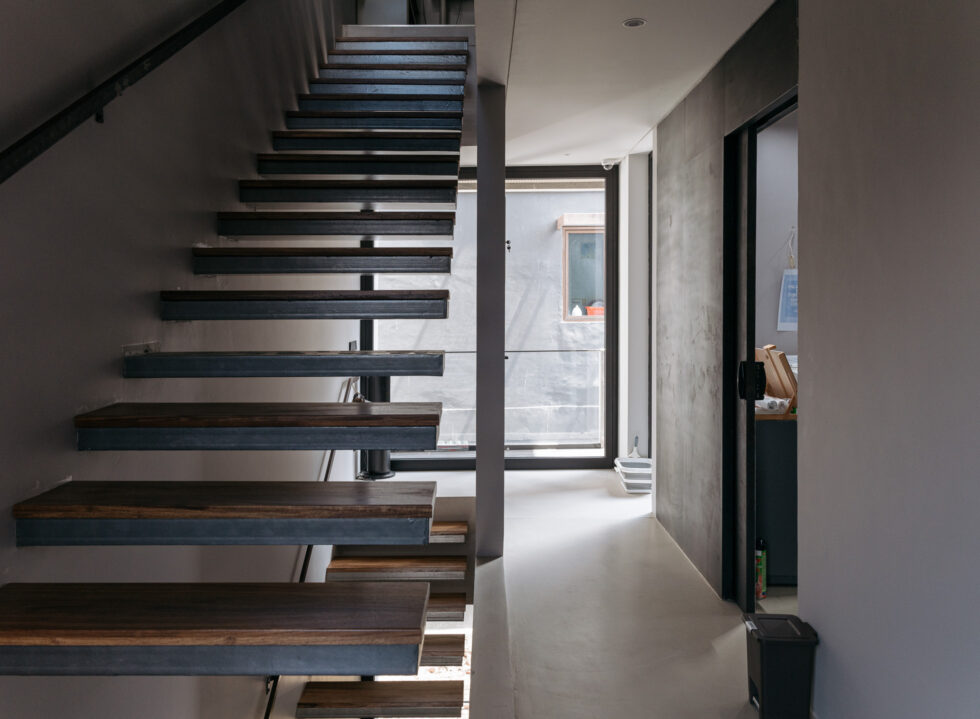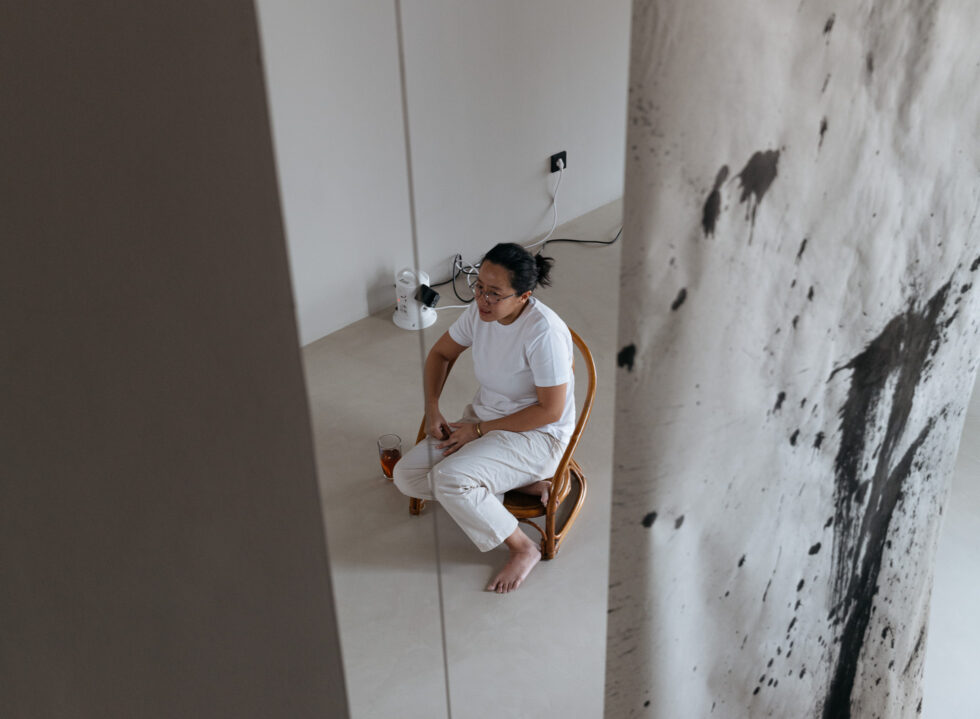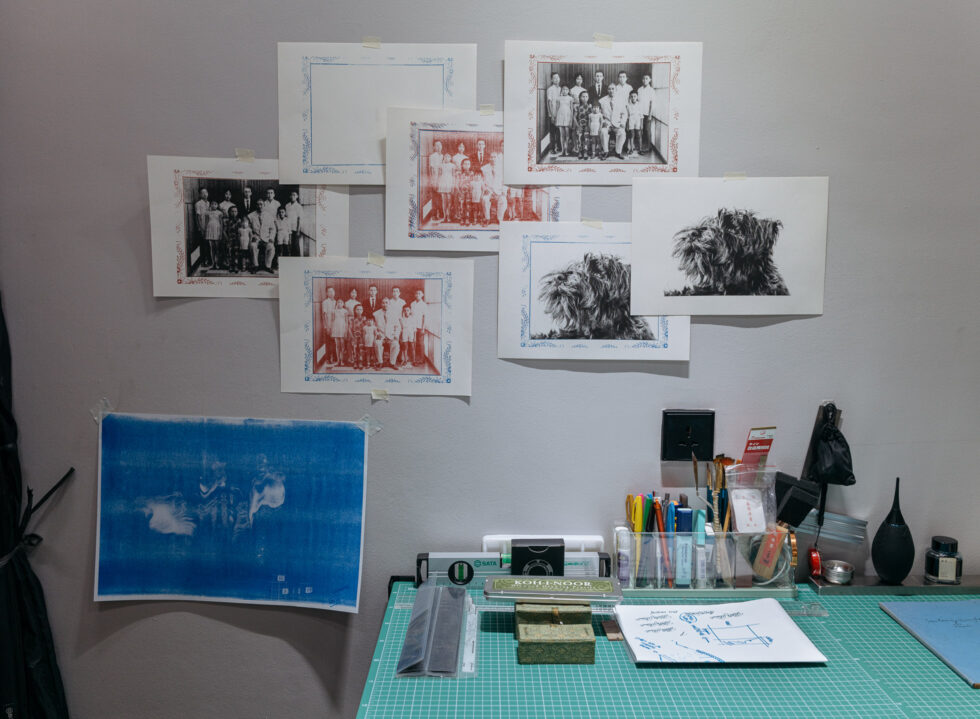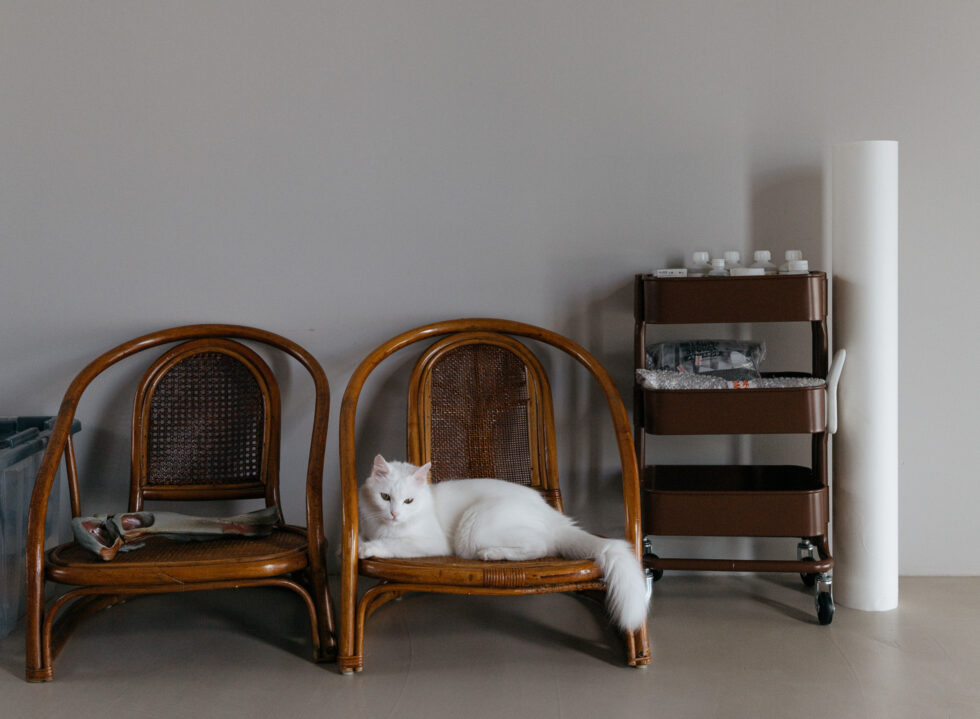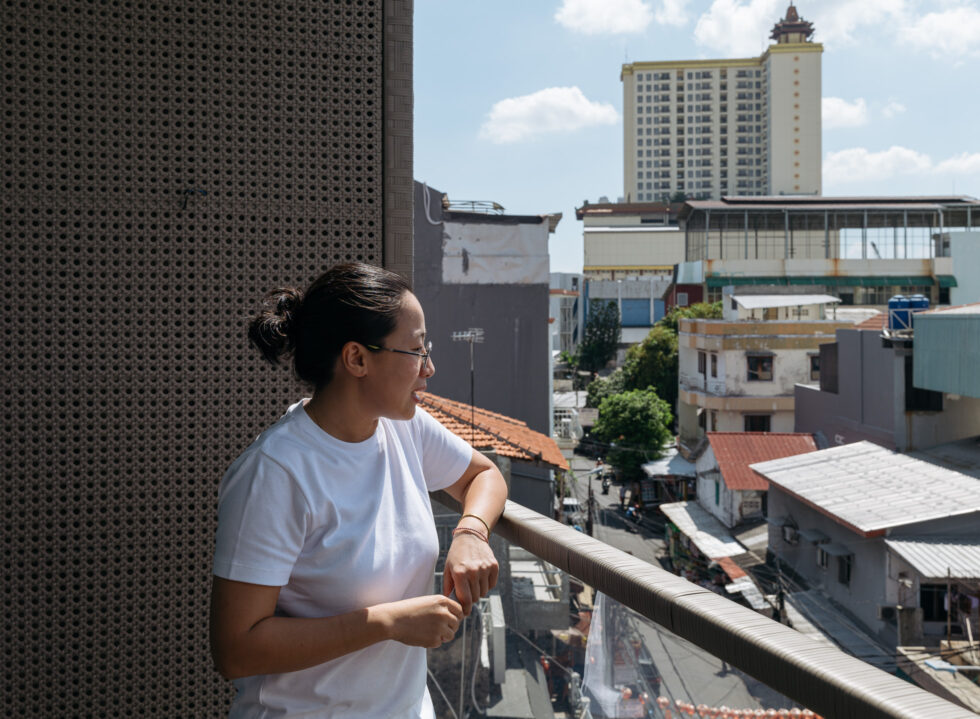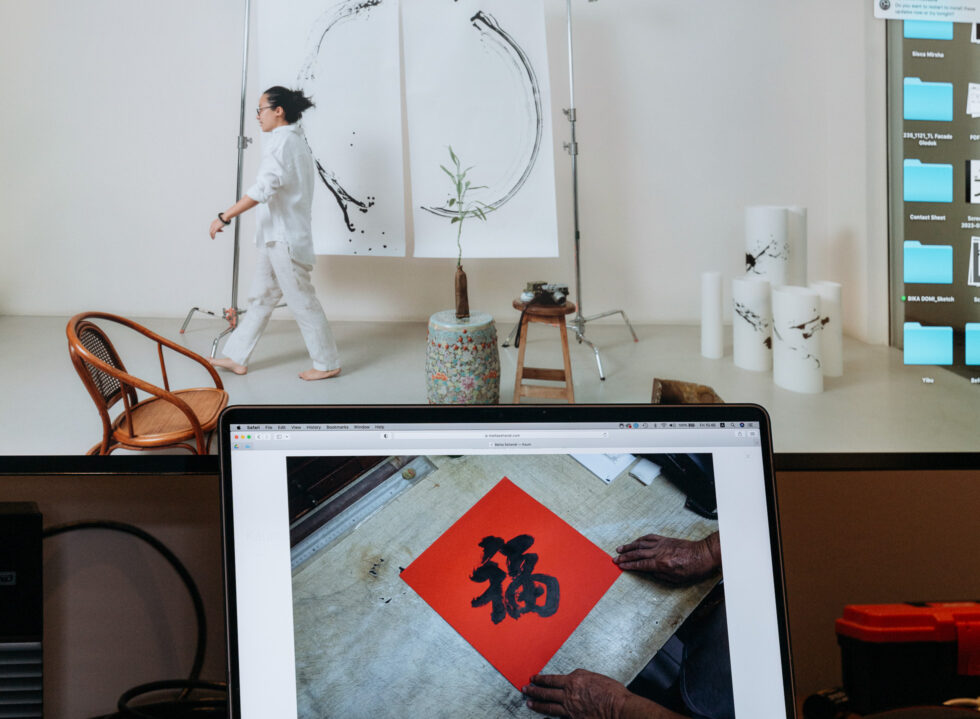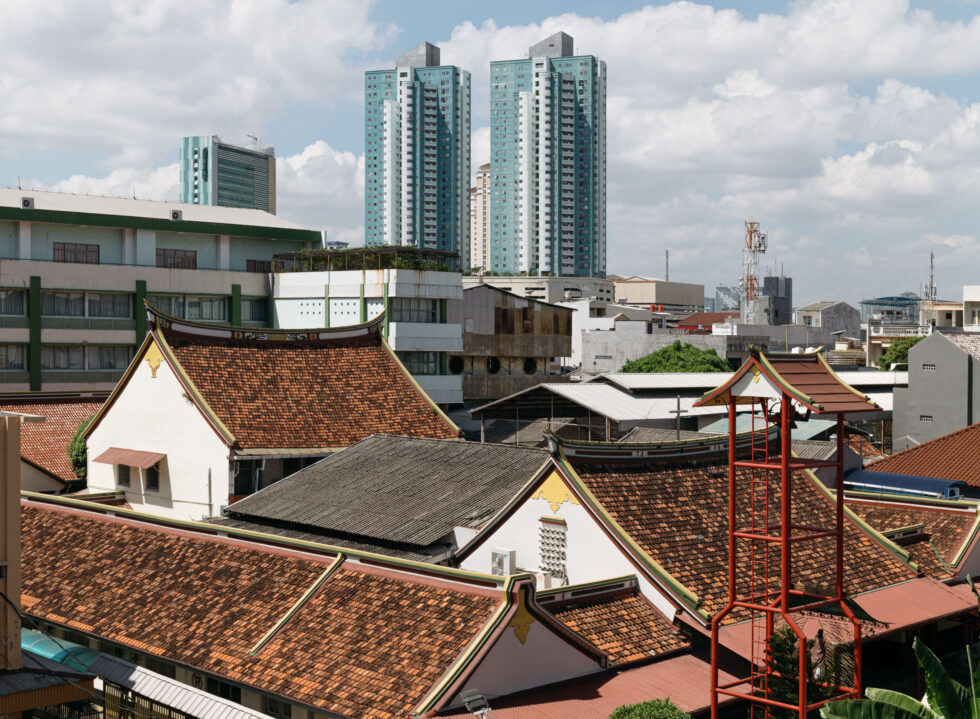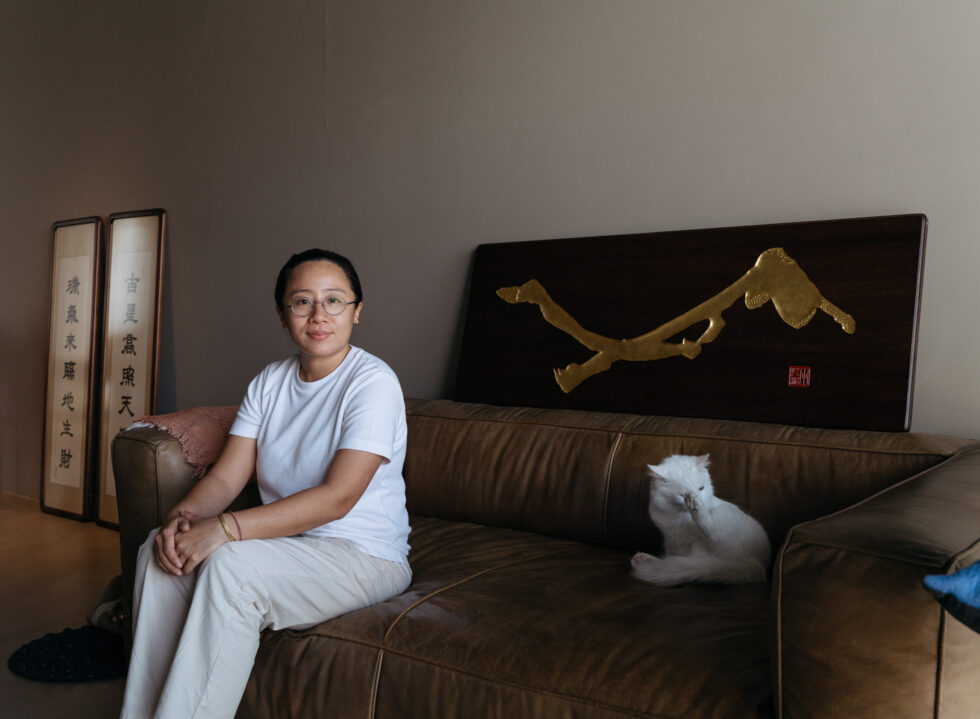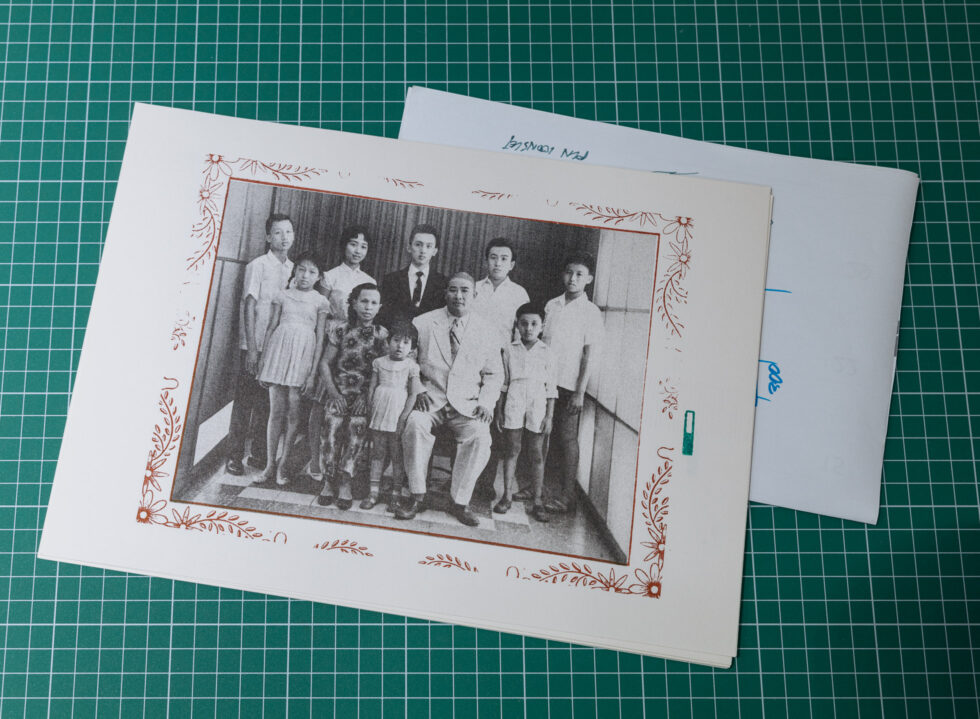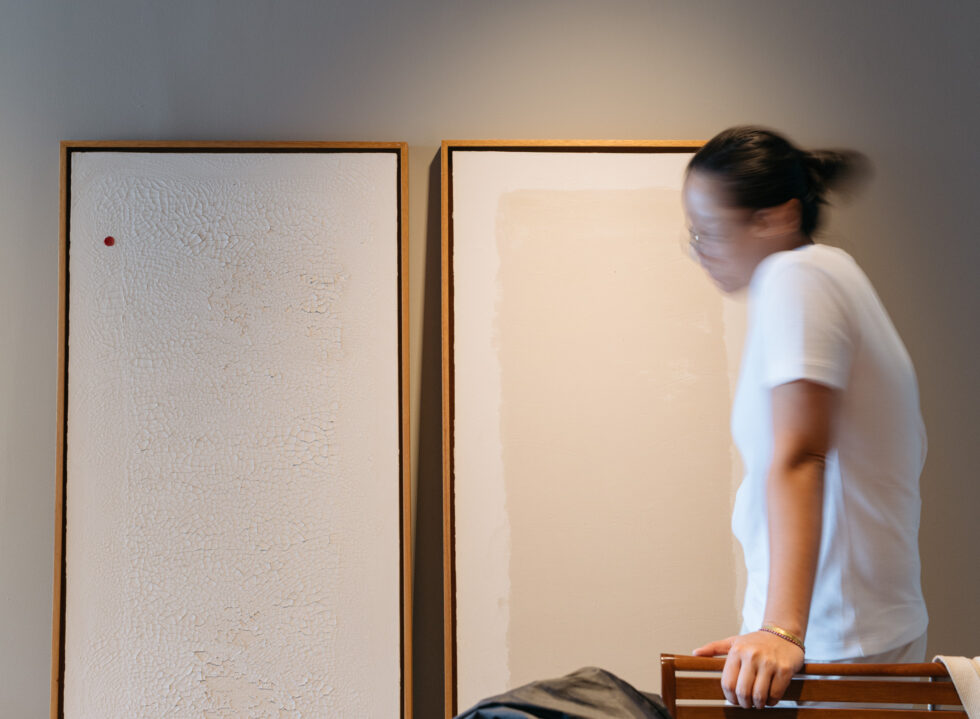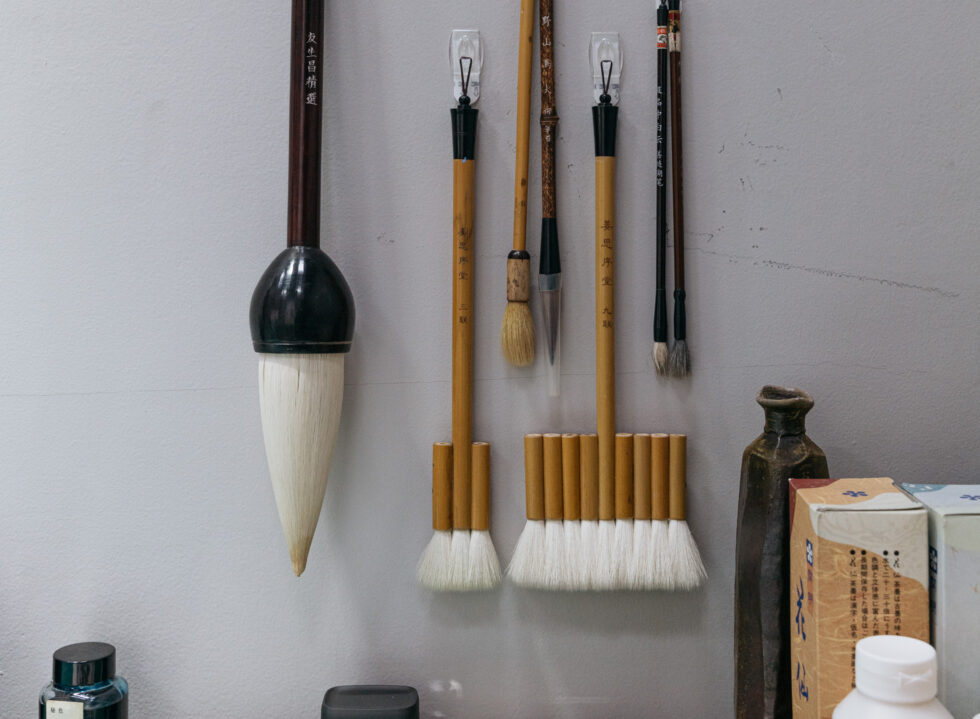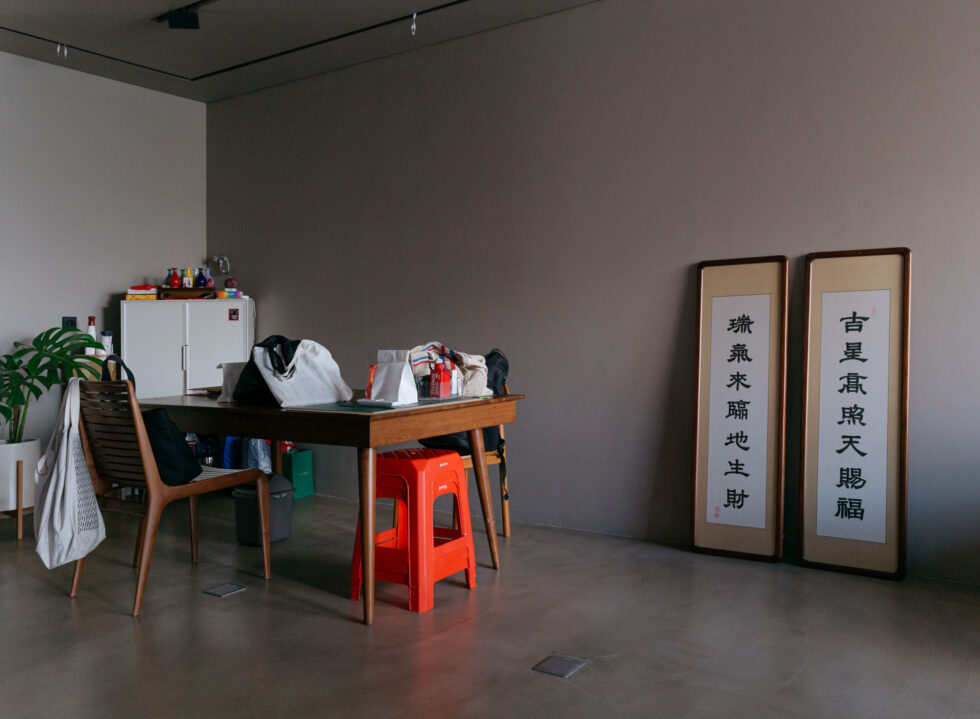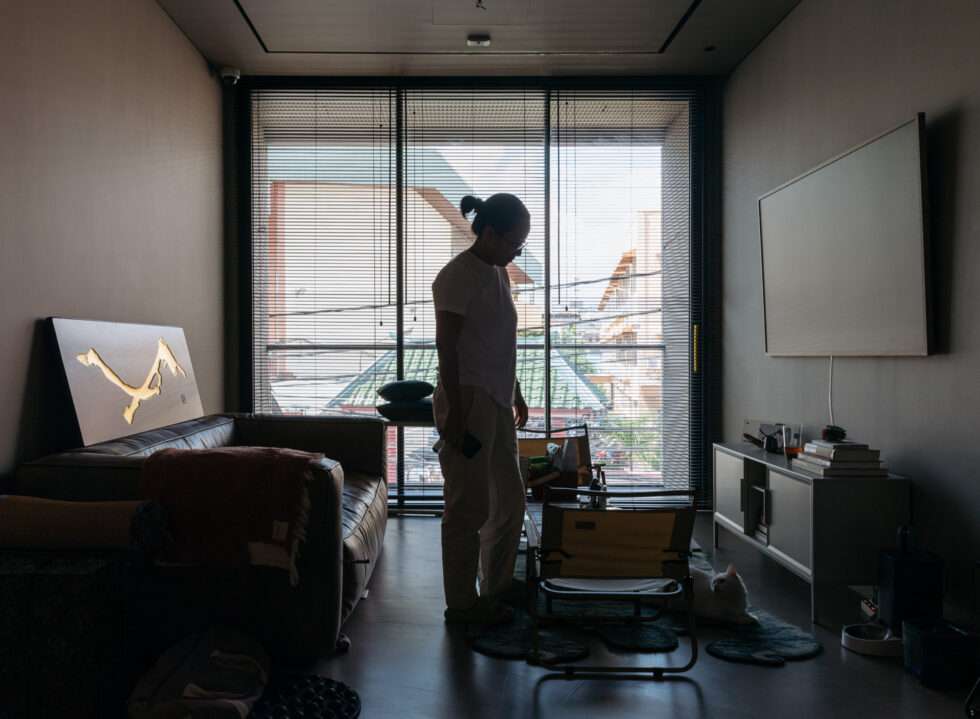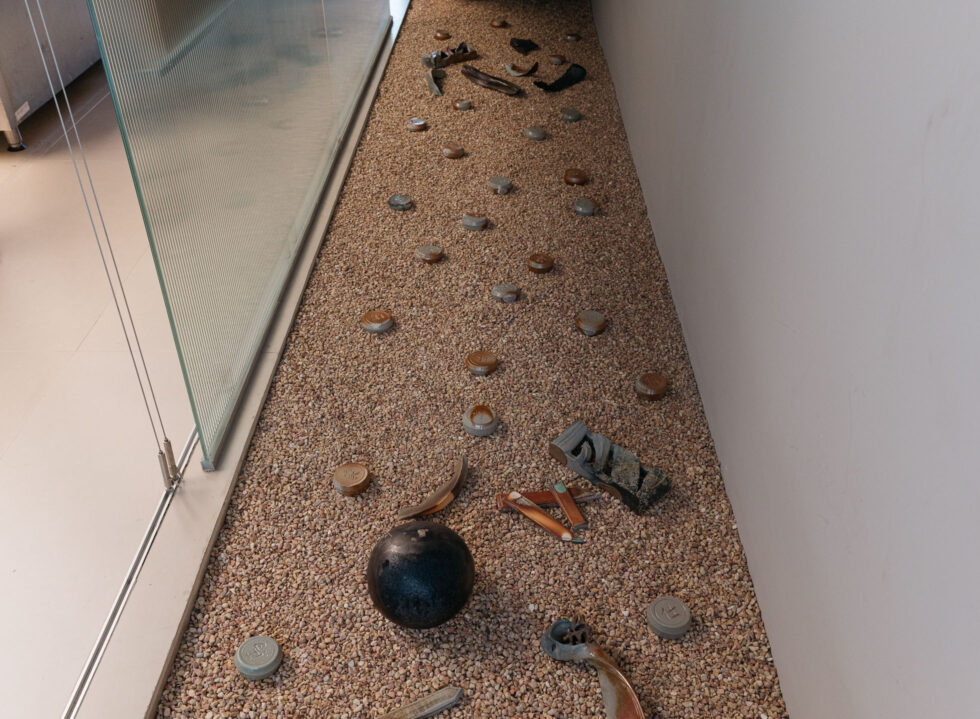Metta Setiandi is the kind of artist that eludes simple categorisation. Working across multiple mediums, her work is a sequence of reflections and awareness manifested across ceramics, paintings, calligraphy, photography, film and sculpture.
“What is it that I’m trying to master out of all these ‘trades’? Perhaps it’s me. There are so many things that I want to communicate, and I feel like they cannot and shouldn’t be exclusively expressed through any one particular medium. To me, it’s more about refining what’s within. Once that’s set, it’ll come out naturally, whatever the form.”
As she navigates her way through the streets of Glodok with quiet confidence true to someone who has grown up in it, it’s easy to see the influence the neighbourhood’s visual vocabulary and long-time residents have had on her. The graphic design graduate recently completed renovations in her studio, a four-storey black rectangular structure that sits in stark contrast to the residential houses and vibrant market area of the Chinatown that surrounds it, which she inhabits with her cats Peppi and Chiyo.
“It’s more about refining what’s within. Once that’s set, it’ll come out naturally, whatever the form.”
Even from a short interaction, it’s quite evident that Metta’s work heavily explores themes of heritage and tradition, executed in a manner that at once draws to her personal and collective experiences. In the print room on the second floor, traces of experimentation with riso printing of an archived family photograph can be seen hung on the walls. Two floors up, a portion of a 7-metre calligraphy scroll is suspended by the stairs, the ink brushstrokes pulsing to life, spirited and vulnerable. This is part of a yearly portrait series she’s working on together with photographer and friend Chris Bunjamin, where Metta was the one sitting in front of the camera for a change.
“Don’t be in front of the camera when you feel your best. Do it when you feel like you can’t do anything. At the time, I was full of anger and felt very stuck in my work. But that was also what felt real to me, so I told Chris, ‘Let’s do it’,” shared the multidisciplinary artist.
She exercises this degree of candour quite instinctively when approaching a project, crediting it to a level of self-acceptance that she’s learned to grow into over the years. “My dad would always tell me that I have too much fire. Based on his Feng Shui book, he’d say I needed to be more gentle, surround myself with more water elements,” Metta recalled. “I was always taught that we came from the soil. I find it a very sacred material, and my birth elements are soil and fire. Combined together, what do we have? Ceramics.”
“I felt like I was able to really connect with the process, it’s like staring in the mirror. At its hottest, fire is at its most beautiful.”
It’s fitting then that a big portion of her practice is working with clay. In 2015, she booked a two-week course at Gaya Ceramic in Ubud, Bali to learn the traditional Japanese wood-fired technique of anagama, or ‘cave kiln’, where the wood ash from the firing settles on the surfaces of the pottery to create a distinctly earthy, natural ash glaze—an experience that was so profound she continues to devote time every year to the practice.
“I was really startled, there was so much fire. It’s a three-day process, with the heat slowly increasing over time. I felt like I was able to really connect with the process, it’s like staring in the mirror. I saw how, at its hottest, fire is at its most beautiful—the flames are like water dancing.” That was when she realised that maybe, rather than finding ways to balance her ‘fire’ or cool down, she needs to sit with and learn to embrace her strengths.
She went on to produce a series of ceramics and sculptures using the same technique, including the ‘Yi Bu Yi Bu’ (2022), a Xiang Qi or Chinese chess instrument which features hand-carved characters by a Glodok-based senior calligrapher Asuk Akwet. Inspired by the times she and her dad would spend playing the board game over the pandemic, she wanted to deliver an atmospheric chess set that honours the cultural traditions she grew up experiencing.
The 33-year-old describes her approach as “very process-based. I want to know that I’ve given all of my consciousness and attention to finding a solution when working on a project. And if that doesn’t work, I’ll move on to the next solution.”
“This is a very important first step in all my work. Coming with intention, blessings and thoughts.”
In celebration of the Lunar New Year in 2019, Metta worked on a month-long collaboration project with Indonesian restaurant KAUM, ‘Act of Positive Intention’, where she invited the audience to express one intention—a prayer, a thought—through a single brushstroke. Towards the end, she assembled the pieces together to form a Chinese character for ‘guāng’, which translates to light. “This is a very important first step in all my work. Coming with intention, blessings and thoughts,” she explained.
This project was especially significant to her because she got to pay homage and work together with her mentors, the late Lioe Ren Chen who produced two calligraphy scrolls of a traditional Chinese poem on blessings and wealth, and Fung Kuo Ing who worked on the woodcarving for one of Metta’s earlier mountainscape calligraphy. “They are two senior figures in the neighbourhood that I really respect and look up to. It’s really something else to watch them do their work. It’s almost like they are breathing, it comes so naturally.”
Echoing the same ‘one stroke, one motion’ idea, the project naturally progressed into a series of textured sculptures. Fired with the anagama technique, thick slabs of clay are beaten and carved to form delicately textured and asymmetrical forms to resemble brush strokes.
It doesn’t take long to notice that her work anchors itself around relationships and connecting with the people around her to contribute to a bigger dialogue and cultural exchange that she learned from her father. “It’s a powerful calling. One that instantly gets me crying or screaming sometimes. But I realised that this is it, what else am I looking for?”
